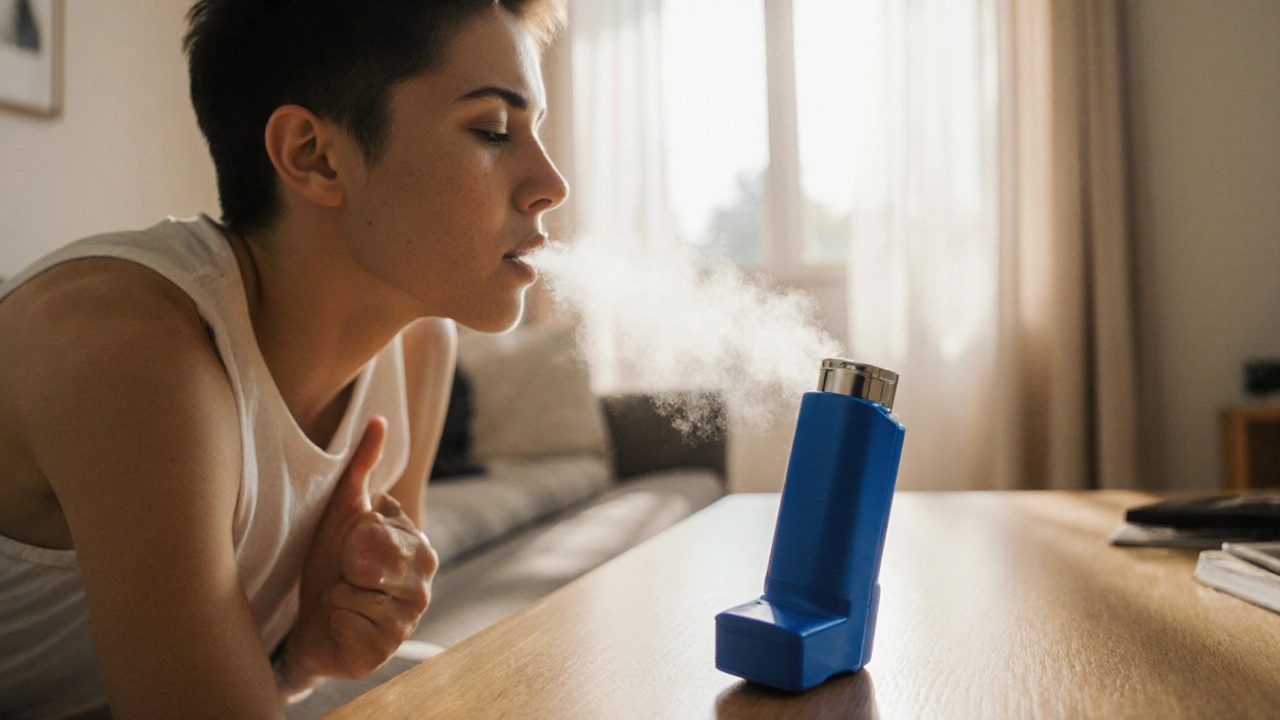Alternative Inhalers: What They Are and Why You Might Need One
Most people think the only way to get medication into their lungs is a classic metered‑dose inhaler (MDI). In reality, there are several other devices that can deliver the same drugs more comfortably or effectively, depending on how you breathe and live.
From dry‑powder inhalers (DPIs) that need just a quick breath to nebulizers that turn medication into a mist you can inhale for minutes, each option has a niche. If you’ve struggled with coordinating a puff and a breath, or if you need a higher dose for severe asthma, an alternative inhaler could be the answer.
Key Types of Alternative Inhalers
Dry‑Powder Inhalers (DPIs) rely on the force of your inhalation to pull powdered medication into the airways. No propellant, no button to press—just a quick, deep breath. They’re great if you have arthritis or trouble with hand‑eye coordination.
Soft Mist Inhalers (SMIs) create a slow‑moving cloud of medication that hangs in the mouth longer than a traditional spray. This gives the drug more time to settle in the lungs, which can improve absorption for some patients.
Nebulizers turn liquid medicine into a fine mist that you breathe through a mask or mouthpiece. They’re the go‑to for children, elderly patients, or anyone who can’t generate the fast inhalation DPIs require. Modern portable nebulizers run on batteries and can be used on the go.
How to Pick the Right Device for You
First, think about your daily routine. If you need a quick dose before a workout, a DPI that fits in your pocket might be best. If you prefer a hands‑free approach while watching TV, a small tabletop nebulizer could work.
Second, consider your lung function. People with very low peak flow often find DPIs hard to use because they can’t inhale forcefully enough. In those cases, an SMI or nebulizer provides a more reliable dose.
Third, talk to your prescriber about the medication formulation. Not all drugs are available in every device type, so your doctor can match the drug to the appropriate inhaler.
Finally, don’t forget maintenance. DPIs need a simple breath‑actuated mechanism, but you still have to keep the mouthpiece clean. Nebulizers require daily washing and occasional filter changes to avoid bacterial growth.
Choosing an alternative inhaler isn’t about abandoning the MDI; it’s about finding the tool that fits your life best. A well‑matched device can improve adherence, reduce flare‑ups, and make breathing feel less like a chore.
If you’re unsure which option suits you, schedule a short appointment with your respiratory therapist or pharmacist. They can demonstrate each device, let you try them, and answer any questions about cleaning, dosing, and cost.
Remember, the best inhaler is the one you’ll actually use every day. Don’t settle for a device that feels awkward or unreliable—explore the alternatives and give your lungs the support they deserve.
Albuterol Inhaler vs Alternatives: Choosing the Right Asthma Relief
A detailed comparison of Albuterol inhalers with levalbuterol, ipratropium, combo inhalers, oral options, and non‑drug strategies, helping you pick the best rescue for asthma.
Read more
